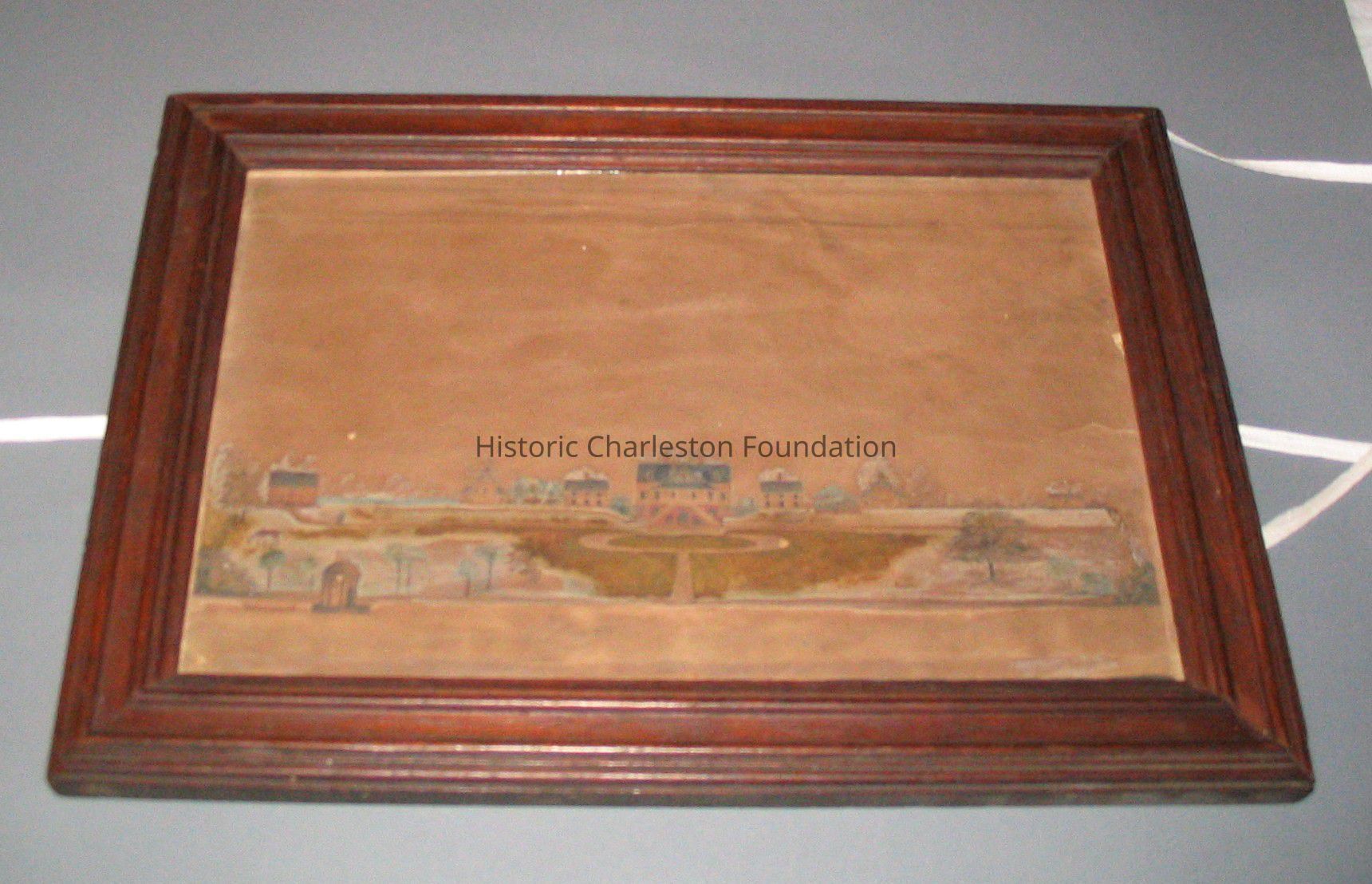Notes
Scope of work: TREATMENT:
Cleaning/ Washing/ Buffering
The surfaces were drycleaned with spong eraser.
The paper was floate-washed, then submerged when the medium seemed stable, in alkaline. water. An enormous amount of discoloration was removed. It was aqueously buffered with a solution of diluted saturated calcium hydroxide water. Upon drying, calcium carbonate is formed in the paper fibers to buffer against future acid formation. THis increased the life of the paper.
Cosmetic/ Repairs/ Backing:
The support was humidified and flattened.
Tears were repaired with Japanese paper and cooked wheat starch adhesive.
Losses were inserted with pieces of the margin that had come loose. The edges were trimmed cleanly.
The paper was given two reinforcing backings of Japanese paper/ starch paste, and stretch- dried to flatten it.
The losses were inpainted using watercolors.
Final Presentation:
The paper was archivally hinged suing Japanese paper/starch paste onto buffered ragboard and reframed with spacers toned with watercolors in a sealed package consisting of the glass, matted picture, and 5 mil Mylar D on the back, taped wound the edges with 3M 810 tape.
The old backing materials were placed on the back of the frame behing the picture and covered with mylar for protection.
Cost: 675
Expected completion date: 2004-09-13Notes
Scope of work: CLEANING/WASHING/BUFFERING:
The surfaces should be drycleaned with sponge eraser.
The paper will be floate-washed, then washed on the air suction table with alkaline tap water to remove acids and stains. This will insure that the sensitive media are not disturbed. It will be aqueously buffered with a solution of diluted saturated calcium hydroxide water. Upon drying, calcium carbonate is formed in the paper fibers to buffer against future acid formation. This increases the life of the paper.
COSMETIC/REPAIRS/BACKING:
The support will be humidified and flattened.
Tears will be repaired with Japanese paper and cooked wheat starch adhesive.
Losses will be inserted with Japanese paper or a suitable Western paper.
The paper will be given a reinforcing backing of Japanese paper/starch paste, and stretch-dried to flatten it if the paper is found to be very thin and fragile.
Stains will be blended using chalk or pastel penci on the surface.
The losses will be inpainted using watercolors.
FINAL PRESENTATION:
The paper will be archivally hinged using Japanese paper/starch paste onto buffered ragboard and reframed with spacers in a sealed package consisting of the glass, matted picture, and 5 mil Mylar D on the back, taped around the edges with 3M 810 tape.
Cost: 675
Expected completion date: 2004-12-16Notes
Scope of work: needs different non-acidic backing
testing of paper
brief washing to address acidity of the paper
lining with Japanese paper to make it "a piece of paper again"
backing with 4 - ply ragboard to mimick backing board
Cost: 1500
